Wildland firefighters, like their structural firefighting brothers and sisters, have to rely on an assortment of hoses, fittings, and nozzles to get their jobs done.
Equipment manufacturers have been busy turning out a variety of equipment that’s specialized for wildland use when firefighters are on the fire lines.
WILDLAND NOZZLES
Rob Meek, Pacific territory manager for Task Force Tips, says his company makes the Twister Nozzle in three configurations: a selectable dual-gallonage combination nozzle, a fixed-flow nozzle, and a barrel nozzle. Meek notes that the Twister Barrel Nozzle is a popular choice for wildland and forestry firefighting because firefighters can increase or decrease the flow by twisting the barrel and that all three models meet the requirements of U.S. Forestry Service (USFS) Specification 1500-239c. He says the Twister Barrel Nozzle will flow 10 gallons per minute (gpm) and 24 gpm at 100 pounds per square inch (psi) and is foam-solution-compatible.
TFT’s Twister Dual Gallonage Nozzle is available in 10- and 24-gpm, 10- and 40-gpm, 20- and 60-gpm, and 20- and 95-gpm flow options, Meek points out. The nozzle has a rubber bumper for a positive grip and front end protection and accepts the TFT FoamJet multiexpansion foam aspirating attachment. The Twister Single Gallonage nozzle has a fixed flow of 95 gpm, with flow patterns of straight stream, narrow fog, and wide fog, Meeks says. He says that TFT also makes a bubble cup aspirating foam nozzle rated at 10 gpm and 40 gpm that sometimes is used on wildland handlines but most often is found on the TFT EF1 electronic forestry monitor that has a top flow of 200 gpm.
Jerry Herbst, director of municipal markets for Elkhart Brass Company, points out that traditional structural fire attack nozzles don’t work very well for wildland fires because of their size and weight. “Elkhart Brass makes the Mystery® Nozzle that incorporates a twist-type shutoff that opens with a straight stream and can flow to a wide fog,” Herbst says.
“We also offer low-pressure options on this nozzle,” he adds. “Paired with an XDTM shutoff, the Mystery nozzle tip offers a convenient method of advancing hoselines in the wildland urban interface (WUI). Simply close the shutoff, remove the Mystery tip, attach additional hose, and then reattach the Mystery tip at the end of the line. The tip’s built-in shutoff allows for the line to be advanced rapidly without the need for an additional nozzle.” Flow rates on the Mystery nozzle are 125 gpm at both 75 psi and 100 psi and 60 gpm and 90 gpm at 100 psi.
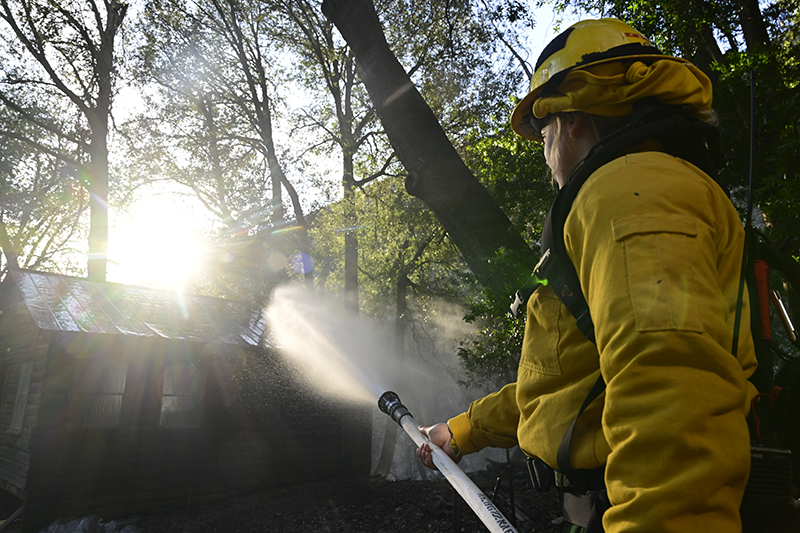
1 A firefighter uses a TFT Twister Dual Gallonage Nozzle on a structure in the wildland. (Photos 1-2 courtesy of Task Force Tips.)
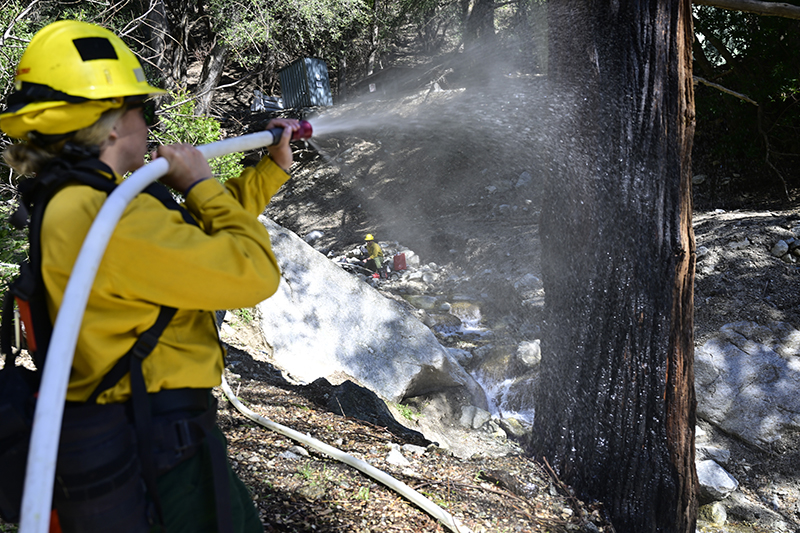
2 TFT’s Twister Barrel Nozzle will flow 10 gpm and 24 gpm at 100 psi.
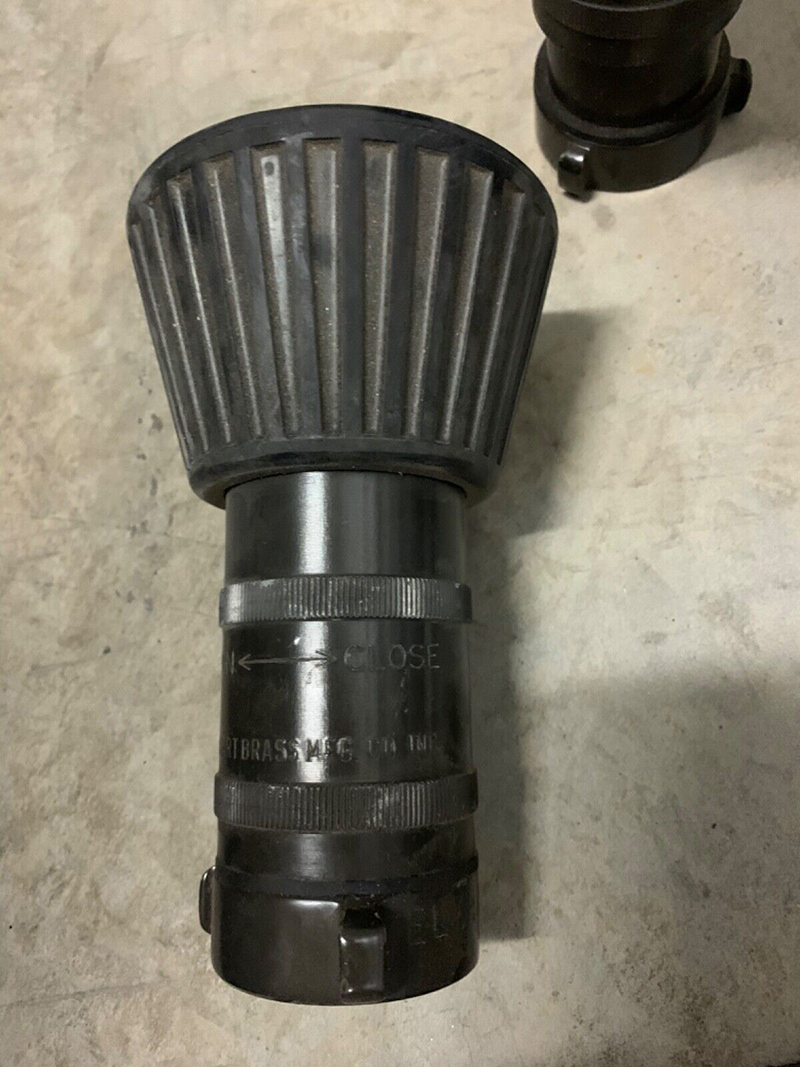
3 Elkhart Brass makes the Mystery nozzle tip that incorporates a twist-type shutoff. (Photo courtesy of Elkhart Brass Co.)
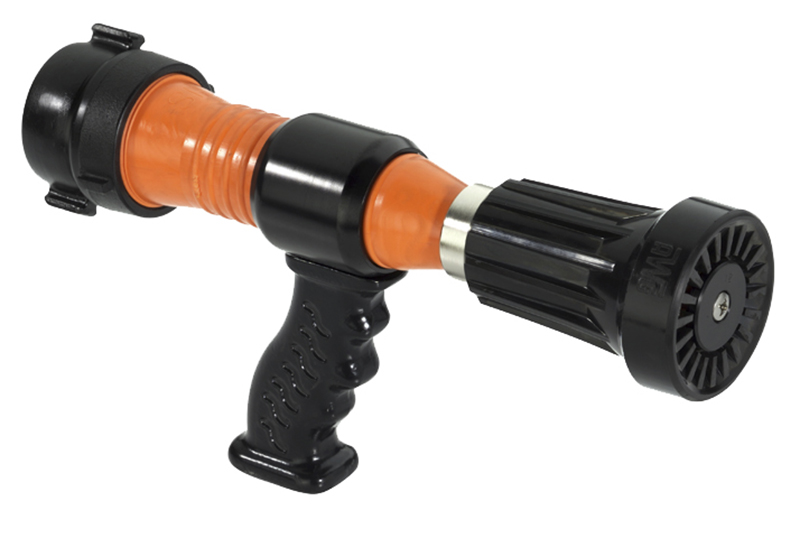
4 Harrington makes the HHSN Wildland Forestry nozzle in 1½-inch and 1-inch sizes. (Photos 4-5 courtesy of Harrington Inc.)

5 This gated wye has a 1½-inch inlet and 1½-inch and 1-inch outlets.
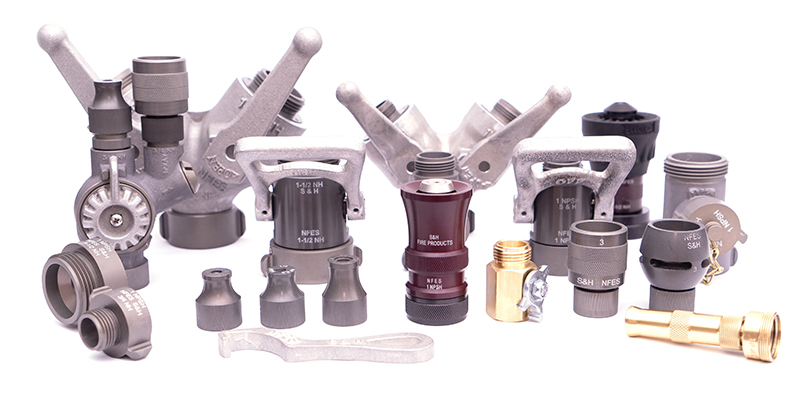
6 S&H Products makes a variety of nozzles, wyes, gated wyes, and fittings for wildland use. (Photo courtesy of S&H Products.)
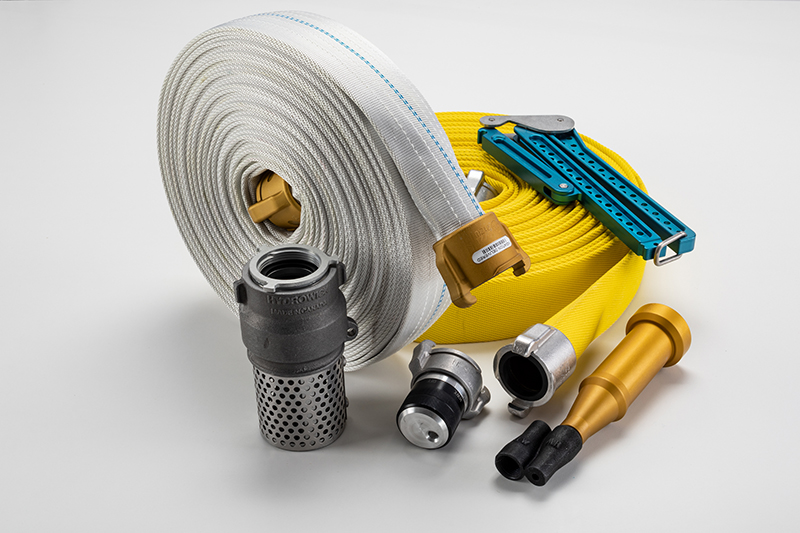
7 Mercedes Textiles makes an array of hoses, nozzles, fittings, and hose clamps for use on wildland fires. (Photos 7-8 courtesy of Mercedes Textiles.)
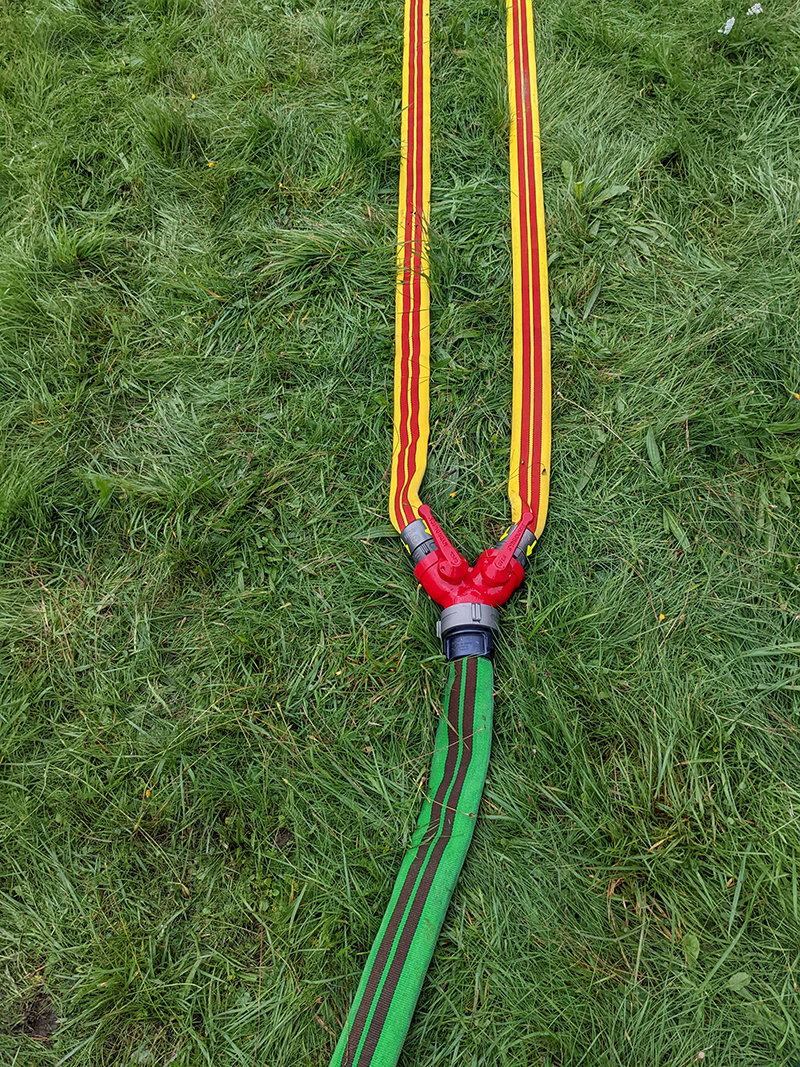
8 A gated wye is shown breaking a large supply line into two smaller lines.
Herbst says Elkhart Brass also makes the XD 205 BAF wildland nozzle that was developed with input from CAL FIRE. “It’s used in an over-the-shoulder configuration,” he says, “and allows the firefighter to change the flow from low to high or back again with a single hand.” The nozzle has a dual-flow design and will flow 30 gpm and 80 gpm at 75 psi.
Paul Carpenter, vice president of sales at Harrington Inc., notes that Harrington makes the HHSN Wildland Forestry and Marine Nozzles. “They are lightweight,” Carpenter says, “and the 1½-inch nozzle flows 75 gpm in straight stream and 150 gpm on fog at 100 psi, while the 1-inch nozzle has a flow rate of 25 gpm straight stream and handles 1-inch and ¾-inch hose nicely.”
Harrington also makes a multiflow nozzle that flows 75 to 150 gpm, which Carpenter says is useful in WUI situations. “The first detent on the nozzle is fog stream, and the second is for straight stream,” he says. “It’s a safety feature to have the fog stream come on first before the straight stream.”
Jeff Thompson, national sales manager for S&H Products LLC, says 95% of S&H’s products are for wildland use, with S&H having a contract with the USFS Defense Logistics Agency for more than 30 years. “We make a dual-range nozzle, which flows from 10 gpm to 30 gpm, that’s popular in wildland use,” Thompson points out. “Some agencies choose a 30-gpm constant-flow nozzle, while others like our 1½-inch and 1-inch break-apart nozzles that have flows of 20 gpm to 90 gpm.” He adds that S&H also makes a ¾-inch mop-up nozzle applicator wand with a shutoff.
Jamie Emblem, Northeast US region sales manager for Mercedes Textiles, says his company makes straight-stream barrel nozzles in 1½-inch, 1-inch, and ¾-inch sizes for wildland use; multiorifice nozzles in 1½-inch and 1-inch sizes; as well as dual fog and straight-stream nozzles in 1½-inch and 1-inch sizes.
WILDLAND FITTINGS
Meeks notes that his company makes a wye (1½-inch reducer to two 1-inch outlets) that is often found in a TFT wildland Smokey pack, which consists of 100 feet of 1½-inch hose, 100 feet of 1-inch hose, a Twister Barrel Nozzle, a gated wye, and the reducer. TFT’s forestry gated wye has a cast aluminum body with 1-inch ball-type valves and either long or short nylon valve handles. Inlet and outlet threads are available in various combinations of 1-inch and 1½-inch dimensions. TFT also makes a Forestry Hose Clamp, a hand-operated tool used to temporarily shut off the flow of water through either a 1-inch or 1½-inch hose.
Herbst says that his company also makes gated wyes and reducers with 1½-inch inlets and 1½-inch, 1-inch, and ¾-inch outlets.
Carpenter says Harrington makes a midsize two-way distributor ball valve for breaking one large hoseline into two smaller lines as well as the company’s H37-2XGT gated wye that goes from a 1½-inch inlet to two ¾-inch outlets that’s popular with wildland crews.
Thompson points out that S&H makes an assortment of gated wye valves for wildland use. “Our 1½-inch inlet to two 1½-inch outlets is our biggest seller,” he says, “followed by our 1½-inch inlet to a 1½-inch and 1-inch outlet gated wye.” S&H also makes gated wyes from a 1½-inch inlet to two 1-inch outlets, from a 2½-inch inlet to two 1½-inch outlets, and custom wyes.
Emblem says that Mercedes Textiles makes a wide array of fittings for wildland use, including shutoff valves, wyes and gated wyes, pressure relief valves, water thieves, and drafting equipment. “Our Water Thief is a fitting that takes water from a main supply line and directs it elsewhere, like to a sprinkler or water curtain for structure protection,” he says. “Our gated wyes are cast, machined, powder coated, or anodized and made with inlets of 2½-inch, 1½-inch, and 1-inch that are gated to 1½-inch, 1-inch, and ¾-inch sizes.”
ALAN M. PETRILLO is a Tucson, Arizona-based journalist, the author of three novels and five nonfiction books, and a member of the Fire Apparatus & Emergency Equipment Editorial Advisory Board. He served 22 years with the Verdoy (NY) Fire Department, including in the position of chief.

